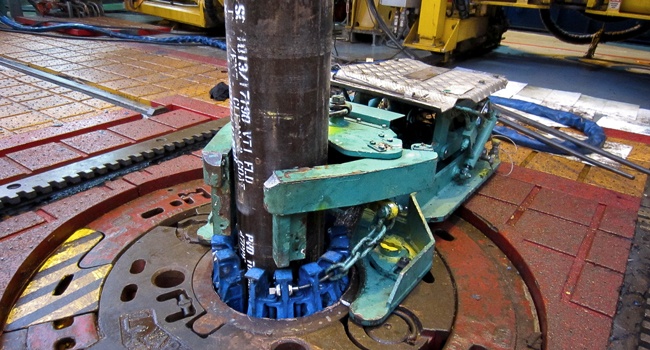How radio operated slips lifters may reduce costs
In my last blog post I talked about the safety matters in casing operations and how the increased use of radio operated casing equipment is really making an impact on safety in the global market.
You can read the article here.
In this post I will focus on the economical benefits this equipment is capable of delivering. I will use the radio operated slips lifter as an example and place it in its natural context as a part of a totally hands free casing running (and tubing/ drilling operation). This list of benefits is all contributing to increased efficiency of operation on different levels.
1. Set the slips from the drillers cabin
With a radio-controlled slips lifter connected to the hydraulics of the rig, the setting of slips is done from a belly pod in a remote position, for instance the drillers cabin.
2. Mount the safety clamp
The safety clamp is mounted in the same operation as setting the slips, taking away the need for manual safety clamps, and reducing operational time considerably. Furthermore it mitigates the hazard of potential dropped objects down the well by eliminating the manual safety clamp, which consists of various loose parts.
3. Operated by the drill crew
This equipment can be operated by the drill crews themselves, reducing the need for dedicated TRS crew.
4. Suit any tubular
Two models ranging from 2 3/8” to 20”.
5. Completely hands free
The radio operated slips lifter is the last bit in the puzzle of totally hands free operation. Together with (top drive casing running tool) fully automated elevators (BX) c/w rotators and radio operated casing tongs, the foundation is laid to run casing without hands on the tubulars or people in red zone.
6. Stand-alone or integrated with the scissor table.
The slips lifter has the ability to be integrated in the scissor table and is then controlled from the same belly pod as the tongs, ensuring a very efficient operation. It may also run from a separate “stand-alone” hydraulic panel controlled by the drilling crew outside of the red-zone
The numbers
Let’s make a generic calculation to see how the elimination of manual safety clamps reduce time and costs:
Well depth: 1000 mtrs.
Amount of joints: 80
Average time used per mounting: 1 minute (install onto the pipe, tightening up the nut with the wrench whilst ensuring all dies have full contact with the OD of the casing)
80×1 minute = 80 minutes of rig time.Considering you might run casing at an average speed of 15 jts / hr which would be a total of 5.33 hrs, an added 1 hour and 20 minutes for safety clamp installation is really costly. Especially when you compare that to the rig day rate.
Typically 2-3 roughnecks / floor men will install the clamp, depending on the size. The bigger the casing, the bigger and heavier the safety clamps. For 2 3/8” you might need two people, but for 20” you could need four.
The well known cliché
We are always told (or rather; we are always saying) that safety comes first. History has shown that this is not always the case. In more and more areas around the world, however, the focus on security is increasing. Being this cost effective, radio-operated equipment is now contributing to lowering risk in a larger scale than ever before. So if you’re not concerned with safety from the beginning, focusing on efficiency will make you look like you are. Efficiency and safety no goes hand in hand.
Topics: Casing Running, Drilling Equipment

By: Robert Koendering
Robert has 15 years experience in tubular running services which comprises pile driving, running casing & high chrome completions, bucking & pressure testing. He is an expert on top drive casing running tools & DwC operations (Level 2).



